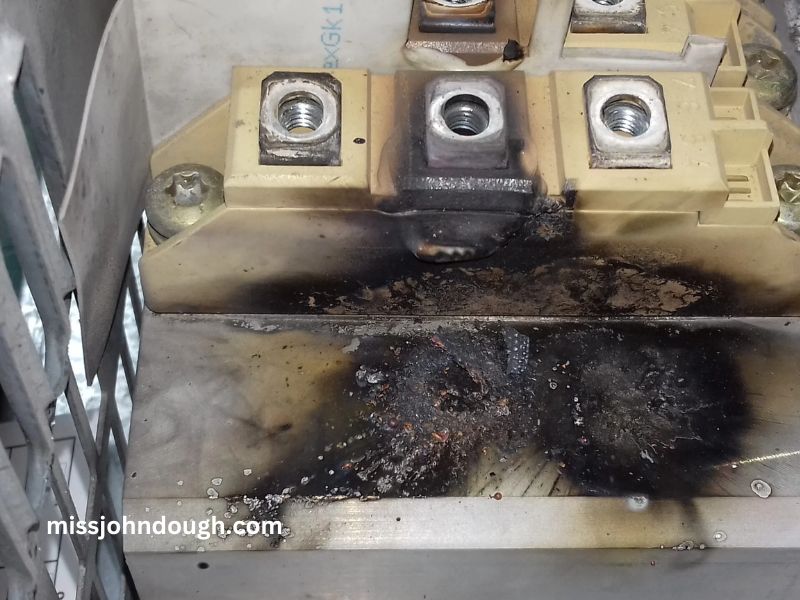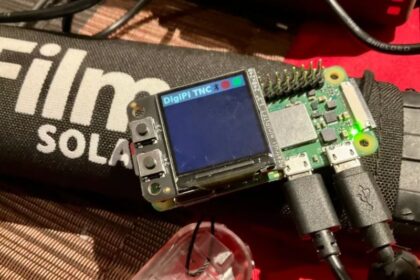Variable frequency drives, or VFDs, are a critical component in industrial and commercial electrical systems. These devices control motor speed and torque by varying the frequency and voltage of power supplied to electric motors. Sounds technical? That’s because it is! But despite their impressive capabilities, many users experience an all-too-common issue—VFD burnout.
If you’ve found yourself searching for “Se Queman Los Variadores de Velocidad PDF” (or why VFDs burn out), you’re not alone. The good news? Whether your goal is to prevent future incidents or better understand these intelligent but sensitive devices, this article has you covered!
We’ll explore the common causes of VFD failure, teach you how to troubleshoot them, and provide actionable tips to keep your drives in top shape.
What are Variable Frequency Drives (VFDs)?
Before we jump into the nitty-gritty of burnouts, it’s important to understand what VFDs are and how they work. Simply put, VFDs are devices that modulate the electrical supply frequency sent to an electric motor. This allows businesses to control machinery speed, significantly improving operational efficiency, extending equipment life, and reducing energy costs.
Why are VFDs Widely Used?
VFDs are used across industries—from manufacturing to HVAC systems—because of their versatility and energy efficiency. Applications include:
- Controlling conveyor belts in assembly lines
- Managing heating and cooling systems in buildings
- Regulating pumps and blowers in water treatment plants
But for all their brilliance, VFDs are complex and can fail without proper maintenance or installation.
Why Do VFDs Burn Out? Common Causes of Failure
Understanding the causes of VFD failure is essential to preventing costly repairs and downtime. Here’s a breakdown of the most common culprits behind VFD burnout:
1. Electrical Overload
One of the most frequent reasons VFDs burn out is due to an electrical overload. When the motor draws more current than the VFD can handle, internal components—like transistors and capacitors—can be damaged.
Tip: Always ensure that the VFD is rated for the motor load it’s controlling. Oversizing the drive can save you from burnout!
2. Improper Installation
A poorly installed VFD is a ticking time bomb. Improper grounding, insufficient ventilation, or incorrect wiring can cause short circuits or lead to overheating.
Pro Tip: Hire certified technicians for installation, and always follow the manufacturer’s guidelines. Most VFD manuals include step-by-step installation instructions to avoid these mishaps.
3. Voltage Spikes
Voltage spikes, or transients, can wreak havoc on a VFD, often originating from lightning strikes or power grid disruptions. These surges can destroy sensitive electronic components in a fraction of a second.
Prevention Tip: Install surge protection devices (SPDs) to safeguard your VFD from unexpected power surges.
4. Overheating
Heat is the arch-enemy of any VFD. Overheating can degrade internal components and lead to failure. Common causes of overheating include blocked air vents, inadequate cooling systems, and operating at high ambient temperatures.
Solution: Keep vents and cooling systems clean, and ensure the drive operates within its temperature limits. Installing fans or heat sinks can also help dissipate heat.
5. Harmonic Distortion
Harmonic distortion occurs when electrical frequencies deviate from their normal waveforms. VFDs are particularly sensitive to these distortions, as they can lead to inefficiencies and failure over time.
Pro Tip: Use harmonic filters to reduce distortion and protect your VFD.
6. Lack of Regular Maintenance
Ignoring routine maintenance is a sure way to shorten your VFD’s lifespan. Dust buildup, worn components, and loose connections can all lead to failure.
Actionable Tip: Create a maintenance schedule that includes regular cleaning, inspection, and testing of your VFDs.
How to Troubleshoot a Failing VFD
When a VFD fails, identifying the root cause is critical to fixing the issue quickly. Here’s a step-by-step approach to troubleshooting a failing drive:
- Check for Error Codes
Most modern VFDs display error codes indicating the problem. Refer to the manual to decode these errors and take appropriate action.
- Inspect the Drive Physically
Open the VFD enclosure and check for visible damage, such as burnt components, melted wires, or residue buildup.
- Measure Input and Output Voltage
Use a multimeter to check if the voltage levels match the VFD’s specifications. Spikes or low voltage may signal an issue upstream.
- Monitor Operating Temperature
Use an infrared thermometer or other tools to ensure the unit isn’t overheating. If the temperature exceeds safe levels, inspect the cooling system.
- Examine the Motor
Sometimes the issue lies with the motor, not the VFD. Check for grounding faults, worn insulation, or mechanical blockages.
How to Prevent VFD Burnout
The best way to deal with VFD failure? Prevent it altogether. Here are some practical tips to keep your VFDs running smoothly for years to come:
- Choose the Right VFD: Select a drive rated for your specific motor and application. Oversizing is better than under-sizing!
- Install Surge Protection: Protect your equipment from voltage surges and transients.
- Optimize Ventilation: Keep your VFDs cool by ensuring adequate airflow and cleaning air vents regularly.
- Implement Routine Maintenance: Check connections, clean components, and test performance to catch problems early.
- Train Operators: Educate your team on VFD best practices to reduce user error.
Why Preventative Maintenance Matters
Investing in preventive measures might seem like an upfront cost, but it’s a small price to pay compared to the downtime, repairs, or even replacements caused by VFD failures. Proper maintenance ensures the longevity of your equipment, saving you time and resources in the long run.
Final Thoughts
VFDs are sophisticated devices, but their complexity makes them vulnerable to various failures. By understanding the common causes of VFD burnout—and implementing strategies to prevent them—you can save your business from the hassle of downtime and expensive repairs.
If you want to dive deeper into troubleshooting or preventing VFD failures, you can always refer to resources such as “Se Queman Los Variadores de Velocidad PDF” for more technical insights.


